Sarah Houlton discovers the chemistry among the specimens at many botanical gardens
When you walk through the gates of a large botanical garden, you might be surprised to learn that, amid the beautiful flowers and glorious trees, there’s a thriving hub of scientific activity. The world’s oldest botanical garden, in Padua, Italy, was set up in the 16th century as a scientific endeavour to grow medicinal plants and teach plant identification. It was a living pharmacy, educating physicians and surgeons about the plant medicines they relied upon.
‘The plants that grow in most of the major botanical gardens are carefully documented in terms of where and when they were planted, and where they came from,’ says Barbara Thiers, who heads scientific research at the New York Botanical Gardens (NYBG) in the US. ‘Most have extensive libraries and herbarium collections. This wide variety of resources makes them great places to do plant research. Scientists can often have the fresh plant material they need within five minutes of leaving the lab.’
A herbarium is a vast library of voucher specimens of plants. They are pressed in the field, dried, and filed away with information about when and where they were collected (nowadays this even includes satellite-fixed location and altitude data), plus the nature of the local habitat. ‘It’s usually possible to extract DNA samples from dried plants, and a lot of the chemistry is unaltered, even if the samples are quite old,’ explains Alan Paton, who manages the biodiversity information and economic botany section of the Kew Gardens herbarium in London, UK.
‘There are about 7 million specimens in our collection, which includes plants from all around the world,’ Paton says. ‘We have about 98% of genera, and we estimate about 75% of species. About 2000 new species are described every year.’ The NYBG herbarium has a similar number of specimens, documenting the plants of the Americas. Both herbaria are in the throes of digitising their collections, but those physical specimens remain essential.
When a new species is discovered, it has to be named, which can cause confusion. Different people may have found the same plant in different places and at different times, leading to multiple names. ‘There are about 350,000 flowering plants, but 900,000 names for them – so, on average, plants have more than two names,’ Paton says.
The problem is accentuated for medicinal plants – each typically has 10 Latin names. ‘Along with the Wellcome Trust, we’ve been trying to bring together all the names for about 4000 medicinal species – Latin, common and pharmaceutical names,’ Paton adds. The confusion presents a real practical problem for chemists and other scientists working on medicinal plants – when there are so many names, how do you find all the literature information about an individual plant?
Plant extracts
Chemistry professor Monique Simmonds, director of the Kew innovation unit, explains that secondary metabolites in plants run the whole gamut – terpenoids, alkaloids, flavonoids, carbohydrates, saponins and so on. Extract profiling is largely done with mass spectrometry (MS), and Kew also has an NMR spectrometer for structure determination. ‘We have built up a big MS library of plant extracts,’ she says. ‘Say a plant has anti-inflammatory activity. Extracts would be profiled to see if they contain known anti-inflammatory compounds, and if not, several extracts made in different ways would be bioassayed for activity. The activity might occur in just two of six extracts, which narrows down the options for what the active might be, and what might be interesting to isolate.’
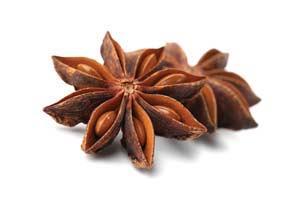
Kew scientists are increasingly getting involved in the authentication of extracts, as it requires knowledge of plants and where they came from. This can give a clue about possible adulterants. ‘Identification not only involves checking if it’s the right species, but if it’s fit for purpose,’ Simmonds says. ‘Does an extract for cosmetics have chemical compounds with antibacterial activity, or which might increase bloodflow at the skin? There is usually a scientific assay that can check these things.’
Food identification has become more important in the past 20 years, with substitutes increasingly passed off as the real thing. ‘A substitute might be OK – a different species of liquorice is still liquorice – but ginseng is much more problematic,’ she explains. ‘American ginseng is endangered, and has different properties to Chinese ginseng. Unscrupulous traders can pass one off as the other. When a shipment is seized at customs, we can chemically profile its secondary metabolites, as there are characteristic compounds that are present in each.’
There is even the possibility of food terrorism. For example, star anise is commonly used in food and is also a traditional medicine, but there’s a very similar looking Japanese star anise that is toxic – and the two are very difficult to tell apart. ‘On one occasion, a company was warned a batch of star anise had been contaminated, but pinpointing a small amount of Japanese star anise in a whole container load is a huge task,’ Simmonds says. ‘They came to us at Kew for help, and we developed a method to analyse the volatiles, rather than the plant material itself, which was easier and much quicker.’
Medicinal plants
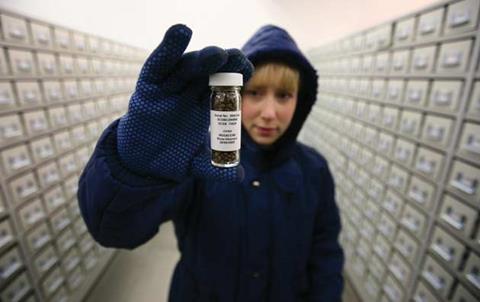
Much of Simmonds’ research focuses on medicinal plants, and she has interests in those which may treat Alzheimer’s, tuberculosis, cancer, diabetes and malaria. ‘If you’re looking for a medicinal or pesticidal plant, or even one that could be used as a dye, you need to make sure that the plant has the right chemistry,’ she says. ‘We’re trying to encourage botanists and seed collectors to understand the chemistry of their plants better. You don’t want to propagate or collect seeds from a plant low in that chemical. You could spend a fortune planting a poor yielder, which could be avoided if you’d done the work at the beginning.’
One of the first remits of the Millennium Seed Bank, housed at Kew’s Sussex outpost, Wakehurst, was to collect seeds from British flora. This prompted a project studying medicinal plants – there’s been a lot of work over the years on plants from China, for example, but very little on those from the UK. ‘Elderflower is traditionally used for coughs and colds, and we’ve identified components in there with antiviral activity,’ Simmonds says. ‘Fig worts are used for wound healing, and by learning about their chemistry, cosmetic uses could be found. Similarly, we can show a little more data for over the counter herbal products that have long use as medicines, and that might encourage investment in a clinical trial.’
NYBG’s Institute of Economic Botany, led by Michael Balick, is grounded in ethnobotany – the relationship between plants, people and culture. Balick’s own speciality is biodiversity and human health, gathering information on the use of plants and extracts by traditional cultures for primary healthcare. Surveys and inventories of plants in specific locations are put together, and they work alongside local ethnobotanists, physicians and hospitals to create manuals detailing which plants are used for what medicinal purpose; this has already been done for the islands of Palau and Pohnpei in the western Pacific, and a project in Belize in Central America is almost complete. ‘The manuals detail what’s known chemically about plants, toxicology, doses, how they’re prepared,’ he says. This information is in danger of being lost; Balick cites a clinic that was using local plants as it had run out of antidiarrhoeal medicines, but the medics trained abroad had no idea the plants were useful.
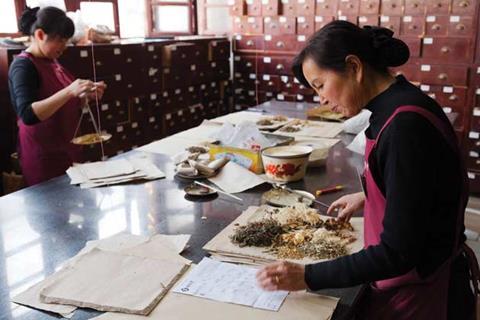
A similar project is being run in New York City itself, by Balick’s colleague Ina Vandebroek. The city has a 600,000-strong community from the Dominican Republic, who brought traditional plant remedies with them to their new home, but who also use medical facilities in the city. Even on the same block, something as simple as aloe can have several different names, with store owners from different parts of the island all using the one they grew up with. ‘Getting them to talk with physicians about plants is an important goal,’ Balick says. ‘We train physicians in cultural competency, and work with communities and herb stores.’
In another project, Balick worked with a group at the City University of New York on a form of cinnamon found in Pohnpei, whose bark is drunk as a tea for back pain. The bark is loaded with safrole, a tumour-promoting catechol derivative, yet the people showed no ill effects. ‘Methanolic extractions clearly contain a large amount of safrole,’ he says. ‘But a boiling water extraction, like tea, with the bark thrown away, has none. How did the people know to take the toxin out, and how? Similarly, how did Amazonian people know cyanide must be removed from cassava by soaking and extracting it? Without lab equipment, people have learnt to extract – or not extract – toxins from plants. It’s fascinating.’
The tree of life
Botanical garden scientists are using molecular systematics to help construct the plant parts of the tree of life. ‘How did plants and their features evolve? Why are some fruits fleshy and some dry? Why do leaves come in all shapes and sizes? How did they originate, and what genes control them?’ Thiers asks.
Constructing the tree of life is a little like genealogy, according to Dennis Stevenson, vice-president for botanical research at NYBG. ‘We now use genomic information to do this,’ he says. ‘Other characteristics used in the analysis include the plants’ chemical constituents, particularly secondary metabolites. This allows you to use the tree for intelligent sampling.’
In molecular systematics, the presence or absence of a compound or anatomical characteristic, for example, in different plants is matched up with sequence data, and congruent genes picked out. ‘You might look at position 321, say, and in two species the sequence has an A, whereas in a third it is a C,’ Stevenson says. ‘If you can get high levels of congruency you can be fairly comfortable that it represents what’s happened in the evolution of that genome. It’s a way to figure out that I’m more related to my sister than I am to you using molecular data.’ It can throw up some interesting and unexpected connections. Who would have thought that squashes are closely related to oak trees?
This is of particular value in the search for plants producing interesting medicinal compounds. ‘I could start with genus A and work through to genus Z and spend 2000 years sampling, or I can use the tree,’ Stevenson says. ‘I can sample individual branches to cut down the amount of work – I might sample 1000 species, trying to represent as much taxonomic diversity as I could. The flip-side is that if I find a medicinally interesting compound in an endangered species, I can take the genealogy, look at the nearest relative, and see what that contains. One strategy looks at great diversity; the other is looking for very localised diversity in the chemistry.’
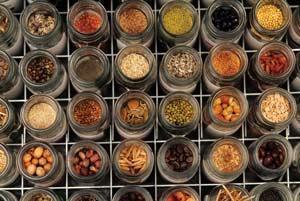
What’s exciting Stevenson most at the moment is evo–devo, or the evolution of development, applied to the evolution of plant chemistry. ‘Mustard oils are a good example,’ he says. ‘Two groups of plants produce them. Many assumed they must be close relatives, but others thought that made no sense as their pollen and wood are very different. That argument went on for years, and finally molecular systematics showed there were indeed two different biosynthetic pathways to the same compounds. This could be useful – plants have found two ways to synthesise something, and maybe one might be more economically feasible.’
For many years, Stevenson ran biodiversity prospecting programmes for Merck, Pfizer and Bristol-Myers Squibb. ‘Most companies have abandoned natural products research, but I think it will come back,’ he says. ‘Recently, we’ve been looking at transcriptomes – genes that are expressed during development – to understand more about biochemical pathways. We can look for genes common to groups of organisms that indicate certain biochemical pathways, and use that to inform our sampling strategy. With 400,000 species of plants it could be a huge task, but the intelligent way is to use genomic information in parallel with molecular systematics.’ In the first instance, they are looking to apply it to nitrogen fixation pathways.
A sequenced future
Scientists based at botanical gardens don’t work in isolation – many joint projects are carried out with scientists at other institutions, and in groups such as the New York Plant Genomics Consortium. ‘We work with high-end plant molecular biologists at New York University, and also at the Cold Spring Harbor Labs, who were involved in the human genome project and therefore have floors of sequencers,’ Stevenson says. ‘The American Museum of Natural History is also involved. Our role is that we know which species are important to study, where to get them, and how to grow them, plus basic botany. Together, we can do as a group what we can’t do as singular units. There’s no reason for NYBG to buy 20 sequencers, but by the same token, Cold Spring Harbor doesn’t have a large ginkgo tree to use!’
Thiers maintains an index to all the herbaria around the world. Not all are located in botanical gardens, but she says she’s continually registering new ones. ‘New botanical resources, including botanical gardens, are being formed at a rapid rate, especially in Asia but also in Latin America,’ she says. ‘It will be interesting to see how they develop differently from the grand old gardens like NYBG and Kew. They probably won’t have the grand façade or libraries full of books, but they will have tremendous electronic resources. Without the burden of maintaining quite so much, it will be interesting to see what they can contribute and, importantly, how they might approach engaging the public in a different way.’
Sarah Houlton is a science writer based in Boston, US
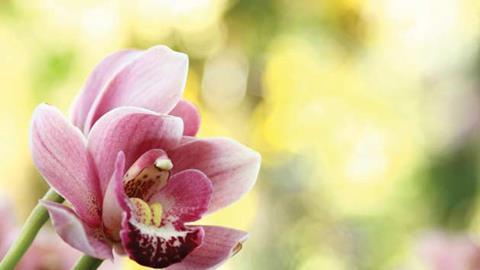
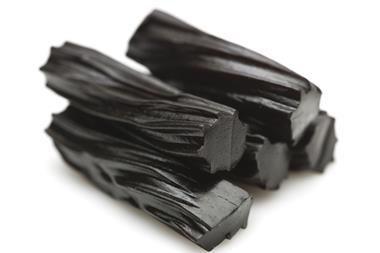


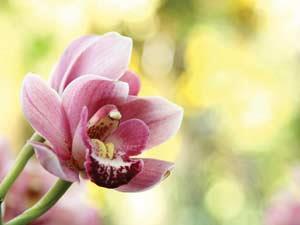








No comments yet